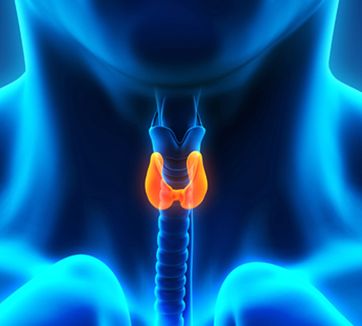Malignant thyroid nodules more common in children vs. adults
The system used to assess malignancy risk in thyroid nodules yields higher malignancy rates in children than in adults, and this may call for new treatment strategies for some types of nodules based on age, according to findings published in Thyroid.

“Current guidelines for the management of pediatric thyroid nodules are mostly based on adult data,” Christine E. Cherella, MD, instructor in pediatrics at Harvard Medical School and of the thyroid center in the division of endocrinology at Boston Children’s Hospital, told Endocrine Today. “Our findings show that the adult-derived cytology system we use to determine the management of pediatric thyroid nodules functions differently in children, which means that pediatric thyroid nodules may need to be treated differently from adult nodules with similar biopsy results.”
Cherella and colleagues assessed thyroid nodules of at least 1 cm in 334 children and adolescents (mean age, 15.1 years; 83% girls) and 9,220 adults (mean age, 52.7 years; 84% women) using medical records from 1998 to 2016. Adult participants were from Brigham and Women’s Hospital and pediatric participants were from Boston Children’s Hospital. The researchers used the Bethesda system for reporting thyroid cytopathology, all read by a single group of pathologists, to categorize the nodules.
The researchers found that 27% of the nodules in children were at least 50% cystic compared with 11% of the nodules in adults (P < .0001). Children also had more nodules with nondiagnostic cytology than adults (12% vs. 6%; P < .0001). Adults had more nodules that were benign compared with children (71% vs. 64%; P < .0001). Adults also had more nodules that were suspicious for follicular neoplasm vs. children (6% vs. 3%; P = .01).
In terms of nodule malignancy, 19% of the nodules in children were malignant vs. 12% of the nodules in adults (P = .0002). Among the nodules with nondiagnostic cytology, 11% were malignant in children and 4% were malignant in adults (P = .03). Malignancy was present in 44% of the childhood nodules that were classified as atypia of undetermined significance vs. in 22% of adult nodules of the same category (P = .004). Seventy-one percent of nodules that were considered suspicious for follicular neoplasm were malignant in children compared with 28% of similar nodules in adults (P = .001).

“Within the most worrisome cytological categories ([suspicious for papillary carcinoma] and malignant), malignancy rates did not differ between children and adults, supporting the approach that clinical management of these nodules should not differ by age,” the researchers wrote.
Among nodules that were resected surgically, there was no longer a significant difference in malignancy rates between children and adults among nodules with atypia of undetermined significance. However, this was likely because a higher percentage of nodules were resected in children vs. adults (44% vs. 29%; P < .0001). Atypia of undetermined significance nodules were resected 81% of the time in children and 58% of the time in adults (P = .01), and after resection, there was no longer a significant difference between malignancy in this nodule type between children and adults, the researchers reported.
“Although we can be fairly confident of these differences between pediatric and adult thyroid nodules, the cause remains unclear and is likely related to differences we do not yet understand in the underlying biology of pediatric and adult thyroid nodules,” Cherella said. “This has the potential to improve and refine how we manage children with thyroid nodules in the future, hopefully allowing us to decide more accurately which thyroid nodules require surgery and which can be safely observed.” – by Phil Neuffer
For more information:
Christine E. Cherella, MD, can be reached at Christine.Cherella@childrens.harvard.edu.
Disclosures: The authors report no relevant financial disclosures.
